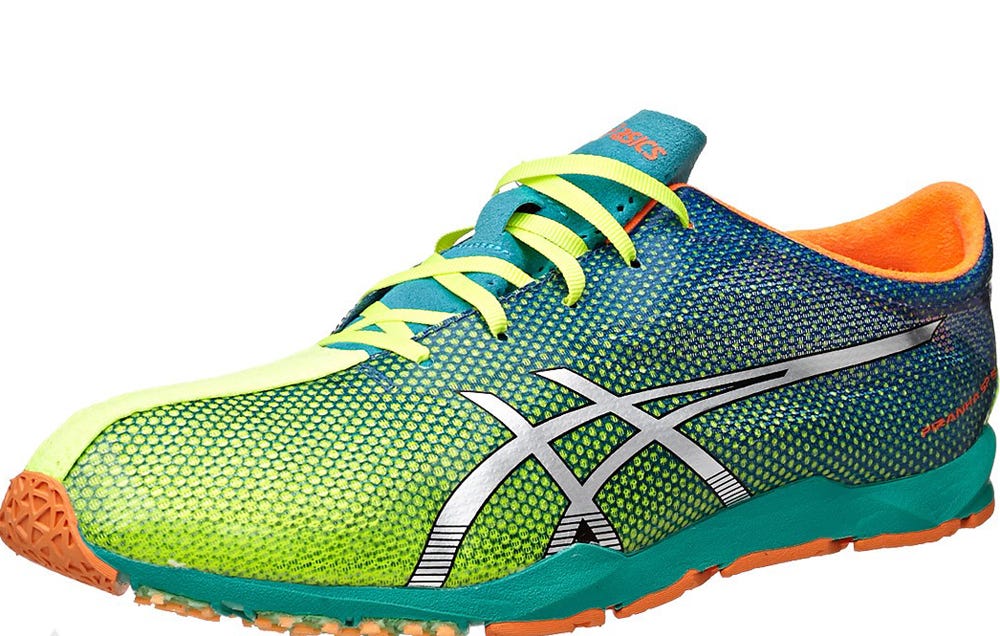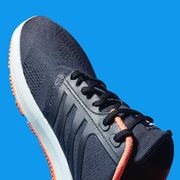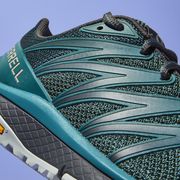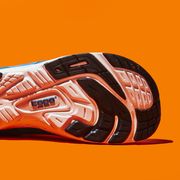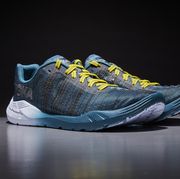I’m in Boston for the American College of Sports Medicine’s annual meeting, which is an absolutely massive gathering of people interested in sports science. Over the next few weeks, I’ll be sharing some of the interesting presentations and posters I’ve seen, starting today with one about the role of body weight in injury risk during transitions to minimalist shoes.
This was a study (abstract available here) by Joel Fuller and his colleagues at the University of South Australia, involving 61 trained runners who averaged about 15 miles a week, all heel strikers running in “conventional” shoes. Half of them (okay, 31 of them) were assigned to transition to a minimalist shoe (Asics Piranha, the racing shoe seen above), while the rest were assigned to transition to a conventional shoe (Asics Gel Cumulus).
The runners were instructed to gradually transition over 26 weeks, not increasing the weekly mileage in the new shoes by more than 5 percent in any given week. They were assessed weekly for pain in various parts of the body, plus injuries that required medical attention or curtailed running.
More From Runner's World

If you look just at shoe type, there was no significant difference in injury rates (11 injured runners in the control shoe, 16 in the minimalist shoe). Similarly, there was no significant effect of body weight on its own.
But if you combine shoe type and weight, there was a very interesting pattern. The average weight of the runners was 165 pounds; for runners who were one standard deviation (20 pounds) heavier than average, the risk of injury was more than four times higher in the minimalist shoe compared to the control shoe. In other words, bigger runners might have trouble with (or perhaps need more time to transition to) minimalist shoes.
One of the questions raised after the presentation was whether the type of bigness mattered: is it mostly overweight people who struggle, or do people who are heavy because, for example, they’re tall also struggle?
When the researchers looked for an effect using body mass index (BMI) instead of weight, they didn’t find any significant differences in injury rate. That suggests that it’s not having a beer gut that’s the problem, it’s the weight itself (even if the weight comes from being tall) that produces higher impact forces and makes the transition to minimalist shoes a little riskier.
It’s worth noting that the study was small, especially when you start breaking down subgroups by weight, so I’d hesitate to declare that this is the final word on the topic. But the results are consistent with what I’ve heard from people in running stores about which people tend to struggle with lighter shoes.
And, of course, this doesn’t mean that big people can’t run in small shoes. It’s just a reason for caution, and for perhaps taking a little extra time to allow your body to adapt to new movement patterns if you do decide to switch shoe types.
***
Discuss this post on the Sweat Science Facebook page or on Twitter, get the latest posts via e-mail digest, and check out the Sweat Science book!
